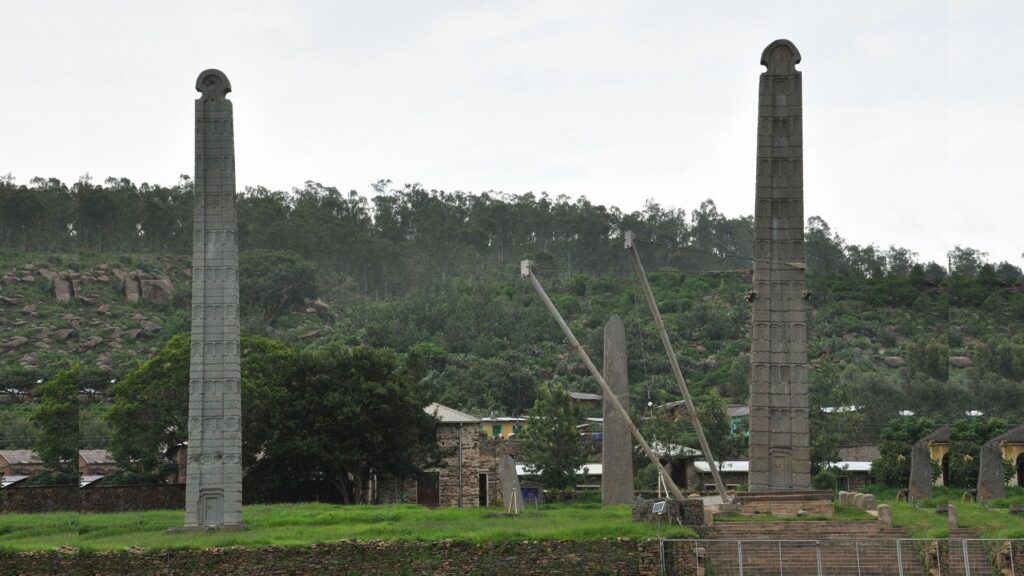Axum Obelisks in Axum – Ancient Monolithic Wonders
Nestled in the heart of Ethiopia, the Axum Obelisks stand as a testament to the architectural prowess and rich history of the ancient Axumite civilization. These towering monoliths, some of which date back to the 4th century AD, are not only a marvel of engineering but also a window into the past, offering insights into the cultural and religious practices of one of Africa’s greatest ancient empires.
What to See
When you visit the Axum Obelisks, you’ll be greeted by a field of towering stone structures, each with its own unique design and story. The most famous of these is the Great Stele, which, although now fallen, originally stood at an impressive 33 meters tall. Nearby, the Obelisk of Axum, which was returned to Ethiopia from Italy in 2005, stands proudly at 24 meters. These obelisks are intricately carved with false doors and windows, mimicking the architecture of Axumite buildings. As you wander through the site, you’ll also find the Tomb of the False Door and the Tomb of the Brick Arches, both of which offer further insights into the burial practices of the time.
A Bit of History
The Axum Obelisks were erected during the height of the Axumite Empire, which thrived from around 100 AD to 940 AD. This empire was a major trading power, connecting the Roman Empire and ancient India through its strategic location. The obelisks served as grave markers for the elite and were believed to be conduits to the heavens, reflecting the Axumites’ religious beliefs. The largest of these, the Great Stele, is thought to have been erected for a powerful ruler, though its exact purpose remains a mystery. The return of the Obelisk of Axum from Italy marked a significant moment in Ethiopia’s modern history, symbolizing the resilience and enduring legacy of the Axumite civilization.
Interesting Facts and Visitor Tips
One of the most intriguing aspects of the Axum Obelisks is their construction. Each monolith was carved from a single piece of granite, transported from a quarry several kilometers away. The precision with which these massive stones were erected, without the aid of modern machinery, continues to baffle historians and engineers alike. For first-time visitors, it’s worth noting that the site is part of the larger Axum archaeological complex, which includes the Church of St. Mary of Zion, believed to house the Ark of the Covenant. The best time to visit is during the cooler months from October to March, and hiring a local guide can greatly enhance your understanding of the site’s historical significance.
How to Get There
Axum is accessible by air, with daily flights from Addis Ababa, the capital of Ethiopia. The Axum Airport is just a short drive from the city center, where the obelisks are located. Alternatively, you can take a bus or hire a private car for a more scenic journey through the Ethiopian highlands. Once in Axum, the obelisks are easily reachable by foot or a short taxi ride. For those visiting for the first time, it’s advisable to stay in one of the local hotels or guesthouses, which offer a range of accommodations to suit different budgets.








